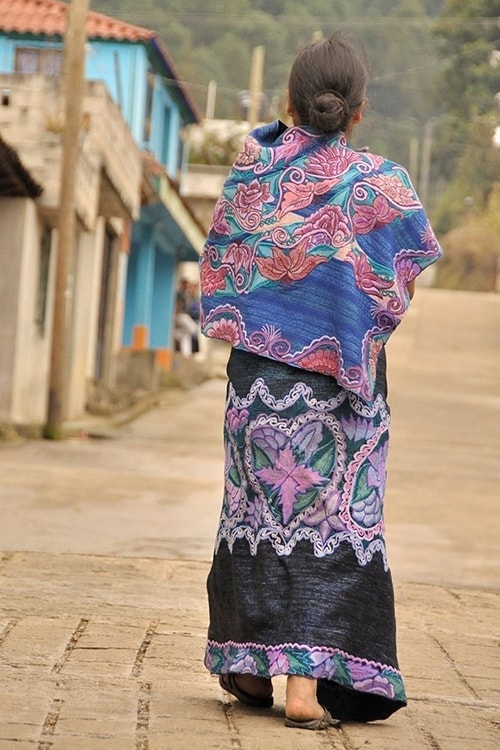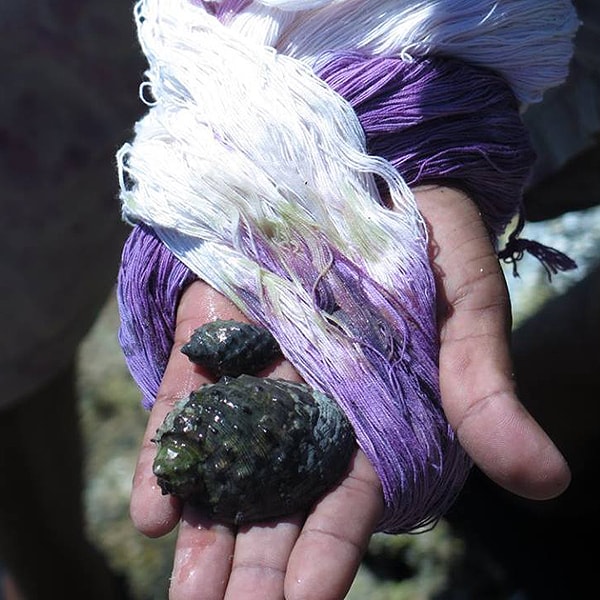
Tia Stephanie Tours has been designing and leading Textile Journeys in Mexico (and soon Colombia), since 2007. From our Mexican Rebozo Tour that illuminates the ikat rebozo, an extraordinary cloth and cultural expression of Mexican women, to La Chinantla, Coast and Isthmus of Oaxaca, the Chiapas highlands, Valley of Tehuacan and Sierra Norte of Puebla, we learn about and appreciate the vast and diverse ethnographic landscape of Mexico through its customs in dress and techniques in dyeing and weaving.

Mexican ikat rebozo on the loom

Tzeltal Maya women in Larrainzar, Chiapas
Exploring textile traditions and dress in any country, offers a window into the history and living culture of the people, and their use of ancestral techniques and symbols to maintain their culture. Along with language, food, religious beliefs and rituals, dress and clothing are one of the most important ways people identify themselves and communicate to others, “I am from here”. In the Maya Highlands of Chiapas, for example, one can travel a few minutes between Zinacantan and Chamula, and while both communities are Tzotzil Maya, they represent themselves very differently through their dress. In fact, each community in the Maya highlands has a different huipil, that the women wear as a “cultural passport”, so people know where they are from!

Dress in Chamula, Chiapas

Dress in Zinacantan, Chiapas
Ancestral knowledge of dyeing with plants, bugs, sea mollusks and spinning native cotton, silk and ixtle fibers, weaving on backstrap or peddle looms represent ancestral techniques that are often lost due to commercial materials, industrial processes and globalization entering even the most remote corners of the globe. It is our hope, that by visiting and appreciating all that we see and learn on our journeys, we become a small part in the preservation of this cultural and ancestral heritage.

Native coyuchi cotton, Xochistlahuaca, Guerrero

Caracol purpura, ancestral dye source and technique of the coastal Mixtec
What do our travelers think? Even we have been surprised at the response to these deep and immersive journeys that take us off the beaten path, to extraordinary communities to meet incredible artisans and people. Some have called them (truly), trips of a lifetime, best trip they’ve ever taken, off the grid, eye opening, enriching and so on. So what exactly is a textile tour and why do we (and our travelers) think it’s more than worth our time and resources to participate in one (or many, as some of our travelers have). Let’s take a look at some past journeys:

Travelers looking stylish in Purepecha rebozos, Michoacán
“Day of the Dead: Culture and Craft in Michoacan”

Ikoots friends from San Mateo del Mar, Oaxaca
“Textile Traditions of the Coast and Isthmus of Oaxaca”

Chinantec friends from San Felipe Usila, Oaxaca
“Enter La Chinantla, Oaxaca”

Traveler sharing a moment and a necklace, Cuetzalan, Puebla
“Textile Traditions of Puebla: Valley of Tehuacan and Sierra Norte”
Travel has known and unknown impacts. Beyond the direct and indirect economic transfers that take place, from acquiring collection quality textiles, enjoying regional foods and meals, hiring local transportation and guides, there are other activities such as: sharing of stories, weaving and dying techniques, materials between visitors and communities and just being there, that also leave a footprint. In the words of one artisan, “You have no idea the impact it has on my family and community when you visit us. Our children have commented that we must be doing something very important and worthwhile, if travelers come from so far to see what we do here”-Luis Rodriquez, Tenancingo
We hope you can join us in the future on a textile and culture journey to Mexico, Colombia and other future destinations. It’s a wonderful “doorway” into the ancestral and living cultures of any country. And, while textile traditions are the overarching narrative of these particular special interest journeys, we learn and experience so much more about people, history, culture, traditions and our collective hopes and aspirations for the future.